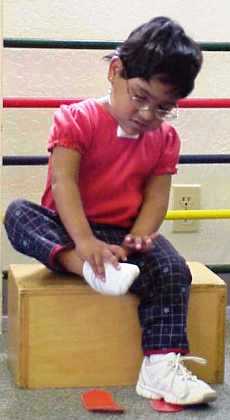


Conductive Education is a unified system of integrated cognitive, physical, social, emotional, volitional, and ethical education that was first developed by Professor András Pető in Budapest, Hungary. It was designed specifically for children with movement disorders of a neurological origin. It is based on the premise that such children do not simply have a medical condition requiring treatment, but a learning problem requiring targeted education. In this educational system, children are conducted to fully engage themselves in learning how to carry out useful, age appropriate actions (not irrelevant movements or exercises). We now know from scientific research that young children with neurological damage have remarkable abilities to achieve full or greatly improved functioning if exposed to the proper stimuli and motivations.
 |
 |
An entire educational lifestyle is provided by Conductive Education, imbued with learning in every developmental area. This learning is not confined to particular times or places, but occurs continuously and everywhere, integrated into all daily activities. Conductive Education teachers (Conductors) lead their students through carefully planned lessons and tasks, but also teach routine activities such as walking, eating, talking, and even resting to bring about the maximum educational benefit. Washing hands, greeting a friend, getting a toy, or watching a squirrel in the garden are all opportunities for physical and mental advancement. Each situation that arises during the day is utilized for its greatest benefit to the child's development.
 |
 |
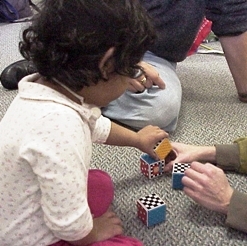 |
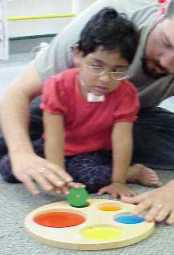 |
Every student is viewed and treated as a whole, rather than as a set of symptoms. Goals are set that address multiple aspects of development, including motor, language, cognitive, volitional, social, ethical, and emotional development. Reaching these goals is accomplished through a single integrated multidisciplinary system, rather than by the application of multiple disciplines at separate times. Tasks provided for the students are comprehensive activities useful in life situations, rather than isolated elements not clearly related to daily life. The activities are useful, interesting, and motivating to the students.
Normalization of the students is the aim; marginalization and dependence on specialized equipment are avoided as much as possible. We strive to use equipment and methods that are familiar and typical in society at large. Children are often taught in groups.
Conductors always set an example for the students. The behavior expected of the students is expressed by the behavior of the conductors, in the way they work together, speak, and show respect for each other.
A primary educational method of Conductive Education is to provide assigned tasks in such a way that the students are self-motivated to complete them. Indirect motivations, such as using candy as a prize for doing an activity, are avoided. Motivation is rather provided by students receiving the natural emotional and social rewards of completing useful and interesting tasks. For example, a student who wants a favorite
toy on a high shelf will be naturally self-motivated to learn to stand. We target students' emotions by assigning tasks that tap into innate desires, inspiring the students to carry out rewarding physical activities and discovering, "I can do it!".
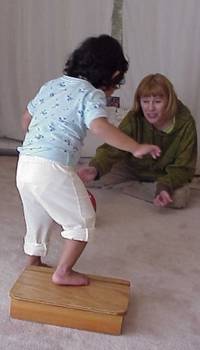
| 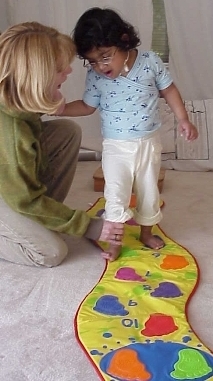 |
The end result is a highly stimulating and motivating educational environment that
propels the students to reach their maximum levels of achievement.
The effectiveness of Conductive Education stems in large part from the very wide repertoire of skills and knowledge available to the conductor. Drawing on this repertoire the conductor creates a holistic program that brings out the child's natural motivation to solve interesting problems and achieve useful tasks. Towards this end, the conductor utilizes a uniquely organized system of facilitating interventions ("facilitations"). Only a few of the many elements of this system have been mentioned in this discussion.
A few of the possible benefits of early intervention using Conductive Education are:
A Conductive Education assessment may detect warning signs of motor skills disorder shortly after the child is born. Starting Conductive Education early can make a difference.
© 2024